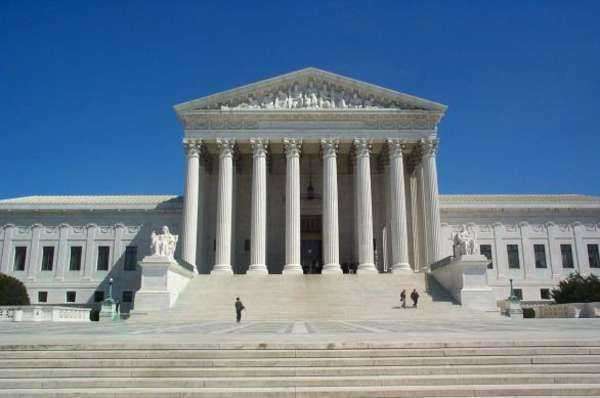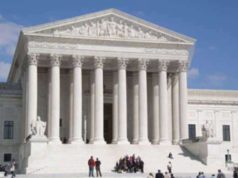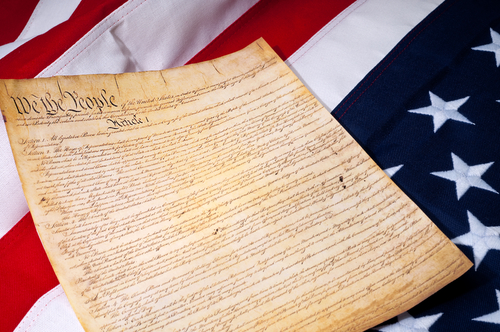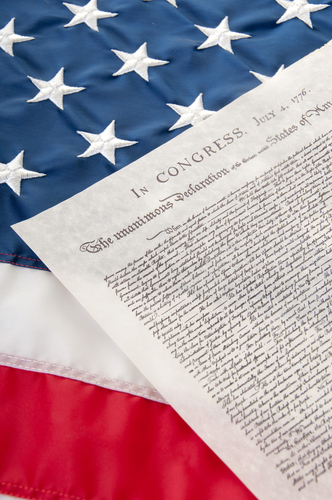Table of Contents
- 1 25th Amendment Overview
- 1.1 The First Section
- 1.2 The Second Section
- 1.3 The Third Section
- 1.4 The Fourth Section
- 1.5 Influence on The United States
- 1.6 What is the 25th Amendment?
- 1.7 The 25th Amendment Defined
- 1.8 President of the United States
- 1.9 Stipulations of the 25th Amendment
- 1.10 25th Amendment Facts
- 1.11 States Not Participatory in the Ratification of the 25th Amendment:
- 1.12 Statutes Associated with the 25th Amendment

25th Amendment Overview
The 25th Amendment to the United States Constitution is a crucial piece of legislation that outlines the procedures for presidential succession, in the event that the president is unable to fulfill his duties. It was ratified on February 10, 1967, and has been influential in ensuring that the country maintains a stable and effective leadership structure.
The 25th Amendment is an important constitutional amendment, as it provides clear guidelines for the order of succession in the event of a presidential vacancy or disability. Prior to its enactment, there was considerable ambiguity regarding the process for determining presidential disability or vacancy, which led to many political and legal controversies.
The First Section
The first section of the amendment establishes that the vice president will assume the presidency if the president is unfit for office. This could be due to illness, incapacity, or any other condition that prevents the president from fulfilling his duties. This provision ensures that there is a clear and well-defined procedure for presidential succession, which helps to maintain the continuity of government and prevent any political instability.
The Second Section
The second section of the amendment addresses the issue of vice-presidential vacancies. If a vice president dies, resigns, or is removed from office, the president can nominate a new vice president, subject to approval from both houses of Congress. This provision has only been invoked once in history, following the resignation of Vice President Spiro Agnew in 1973, which led to the appointment of Gerald Ford as vice president.
The Third Section
The third section of the amendment is perhaps the most controversial, as it outlines the procedures for determining presidential disability or incapacity. If the president is unable to fulfill his duties due to a medical issue or any other condition, the vice president and a majority of the cabinet can declare the president unfit for office and assume the role of acting president. This provision has never been invoked, although there were discussions about its potential use during the administrations of Ronald Reagan and George W. Bush.
The Fourth Section
The fourth and final section of the amendment outlines the process for the president to resume his duties after a period of incapacity. The president can declare himself fit to serve, but this decision can be challenged by the vice president and a majority of the cabinet. If this happens, the issue is resolved by Congress, which can vote to confirm that the president is fit to serve or declare a presidential vacancy.
Influence on The United States
Overall, the 25th Amendment has been a crucial piece of legislation that has had a significant influence on the United States. It has provided clear guidelines for presidential succession and ensured that the country maintains a stable and effective leadership structure. Additionally, the amendment has helped to avoid political controversies and legal disputes that can arise when there is ambiguity regarding the process for determining presidential disability or vacancy.
One of the most significant instances of the 25th Amendment being invoked came in 1974, following the resignation of President Richard Nixon. Vice President Gerald Ford assumed the presidency, becoming the first person to do so under the provisions of the 25th Amendment. Ford’s ascension to the presidency during a time of political turmoil was a testament to the importance and effectiveness of the 25th Amendment.
Another important example of the 25th Amendment being invoked was during the presidency of Ronald Reagan. In 1981, Reagan was shot by a would-be assassin and spent several weeks in the hospital recovering from his injuries. During this time, Vice President George H.W. Bush assumed presidential duties, although the amendment was not formally invoked. However, the incident raised important questions about the process for determining presidential disability and highlighted the need for clear guidelines.
In recent years, there has been increasing discussion about the potential use of the 25th Amendment, particularly in relation to President Donald Trump. Some critics have argued that the president’s behavior and statements suggest that he may be unfit for office, and have called for the amendment to be invoked. However, so far no action has been taken, highlighting the importance of the amendment’s provisions and the need for careful consideration before invoking its provisions.
In conclusion, the 25th Amendment is a crucial piece of legislation that has had a significant influence on the United States and its political system. It has provided clear guidelines for presidential succession, ensured that the country maintains a stable and effective leadership structure, and helped to avoid political controversies and legal disputes. While the amendment has been invoked only a few times in history, it remains an important safeguard against any potential disruptions to the continuity of government and the stability of the nation.
What is the 25th Amendment?
“Section 1. In case of the removal of the President from office or of his death or resignation, the Vice President shall become President.
Section 2. Whenever there is a vacancy in the office of the Vice President, the President shall nominate a Vice President who shall take office upon confirmation by a majority vote of both Houses of Congress.
Section 3. Whenever the President transmits to the President pro tempore of the Senate and the Speaker of the House of Representatives his written declaration that he is unable to discharge the powers and duties of his office, and until he transmits to them a written declaration to the contrary, such powers and duties shall be discharged by the Vice President as Acting President.
Section 4. Whenever the Vice President and a majority of either the principal officers of the executive departments or of such other body as Congress may by law provide, transmit to the President pro tempore of the Senate and the Speaker of the House of Representatives their written declaration that the President is unable to discharge the powers and duties of his office, the Vice President shall immediately assume the powers and duties of the office as Acting President.
Thereafter, when the President transmits to the President pro tempore of the Senate and the Speaker of the House of Representatives his written declaration that no inability exists, he shall resume the powers and duties of his office unless the Vice President and a majority of either the principal officers of the executive department or of such other body as Congress may by law provide, transmit within four days to the President pro tempore of the Senate and the Speaker of the House of Representatives their written declaration that the President is unable to discharge the powers and duties of his office.
Thereupon Congress shall decide the issue, assembling within forty-eight hours for that purpose if not in session. If the Congress, within twenty-one days after receipt of the latter written declaration, or, if Congress is not in session, within twenty-one days after Congress is required to assemble, determines by a two-thirds vote of both Houses that the President is unable to discharge the powers and duties of his office, the Vice President shall continue to discharge the same as Acting President; otherwise, the President shall resume the powers and duties of his office.”
The 25th Amendment Defined
Date Proposed
The 25th Amendment was proposed on July 6th, 1965
Date Passed
The 25th Amendment was passed on February 10th, 1967
President of the United States
Lyndon B. Johnson was the President of the United States during the ratification of the 25th Amendment
Stipulations of the 25th Amendment
The 25th Amendment addresses the procedure undertaken in the event that a President of the United States is no longer able to carry out service with regard to the Office of Presidency
This Amendment addresses the method undertaken in the event that the replacement – or adjustment – of the appointment of the President serving at the time is necessary; such circumstances may involve illness, removal, impeachment, or the death of a President
The 25th Amendment states that in the event that an acting President is no longer able to serve, the acting Vice President will assume any or all presidential duties
25th Amendment Facts
Subsequent to the ratification of the 25th Amendment, many lobbyists and politicians alike found the preexisting protocol with regard to ad-hoc appointment to a vacant presidential seat to be vague
William Henry Harrison was the first President to die while in office; Vice President John Tyler assumed the position of presidency subsequent to Harrison’s death
4 Presidents have been assassinated while in office – Abraham Lincoln, James Garfield, William McKinley, and John F. Kennedy; 4 Presidents have died from illness while in office – William Henry Harrison, Zachary Taylor, Warren Harding, and Franklin Delano Roosevelt
The office of the Vice President has been temporarily empty approximately 16 times since the presidency of George Washington; this emptiness has been a result of death, removal, or dismissal
States Ratifying the 25th Amendment:
1. Alabama
2. Alaska
3. Arizona
4. Arkansas
5. California
6. Colorado
7. Connecticut
8. Delaware
9. Florida
10. Hawaii
11. Idaho
12. Illinois
13. Indiana
14. Iowa
15. Kansas
16. Kentucky
17. Louisiana
18. Maine
19. Maryland
20. Massachusetts
21. Michigan
22. Minnesota
23. Mississippi
24. Missouri
25. Montana
26. Nebraska
27. Nevada
28. New Hampshire
29. New Jersey
30. New Mexico
31. New York
32. North Carolina
33. Ohio
34. Oklahoma
35. Oregon
36. Pennsylvania
37. Rhode Island
38. South Dakota
39. Tennessee
40. Texas
41. Utah
42. Vermont
43. Virginia
44. Washington
45. West Virginia
46. Wisconsin
47. Wyoming
States Not Participatory in the Ratification of the 25th Amendment:
1. Georgia
2. North Dakota
3. South Carolina
Statutes Associated with the 25th Amendment
The Amendment replaced the previous legislature exiting within Article 2, Section 1, Clause 6 of the Constitution of the United States – legislation considered to be both vague and ambiguous with regard to the expressed protocol:
“In Case of the Removal of the President from Office, or of his Death, Resignation, or Inability to discharge the Powers and Duties of the said Office, the Same shall devolve on the Vice President, and the Congress may by Law provide for the Case of Removal, Death, Resignation or Inability, both of the President and Vice President, declaring what Officer shall then act as President, and such Officer shall act accordingly until the Disability be removed, or a President shall be elected.”(Article 2, Section 1, Clause 6)


























